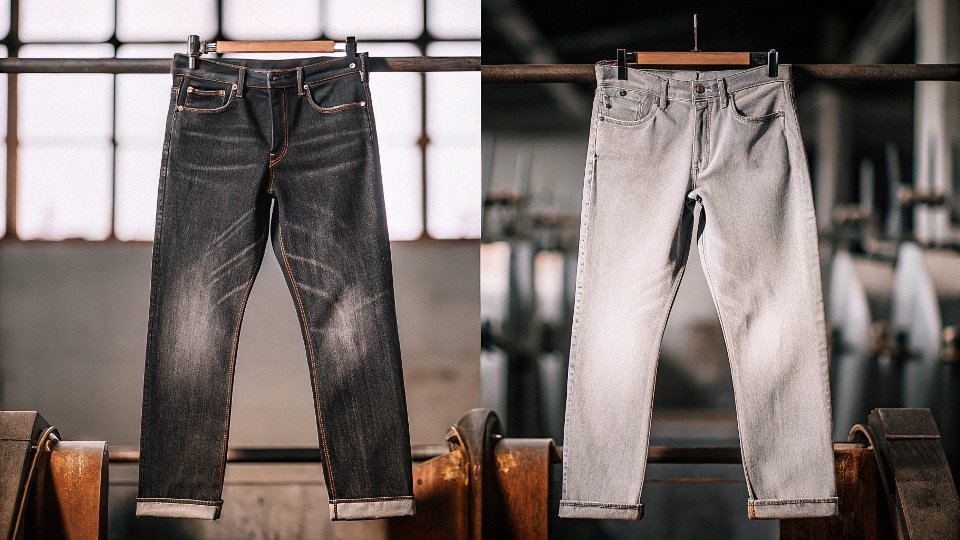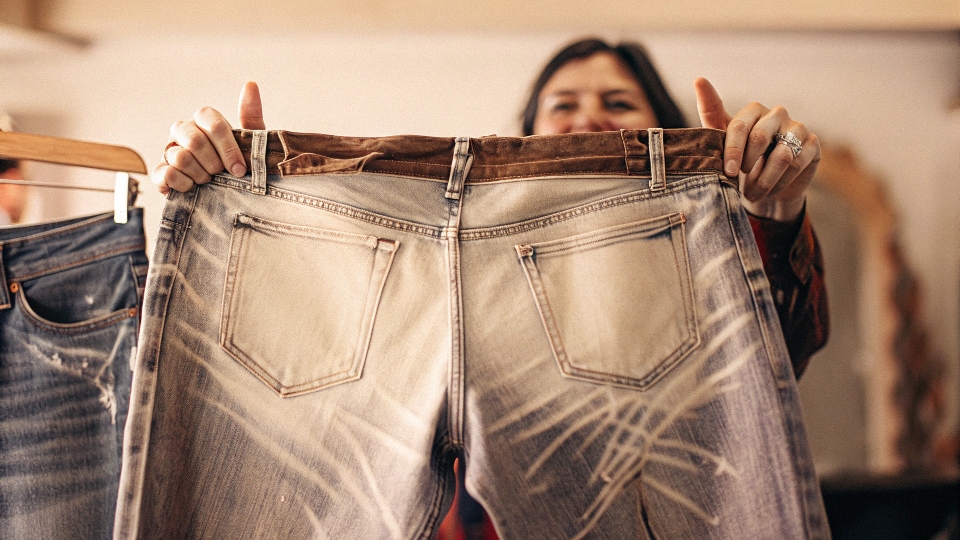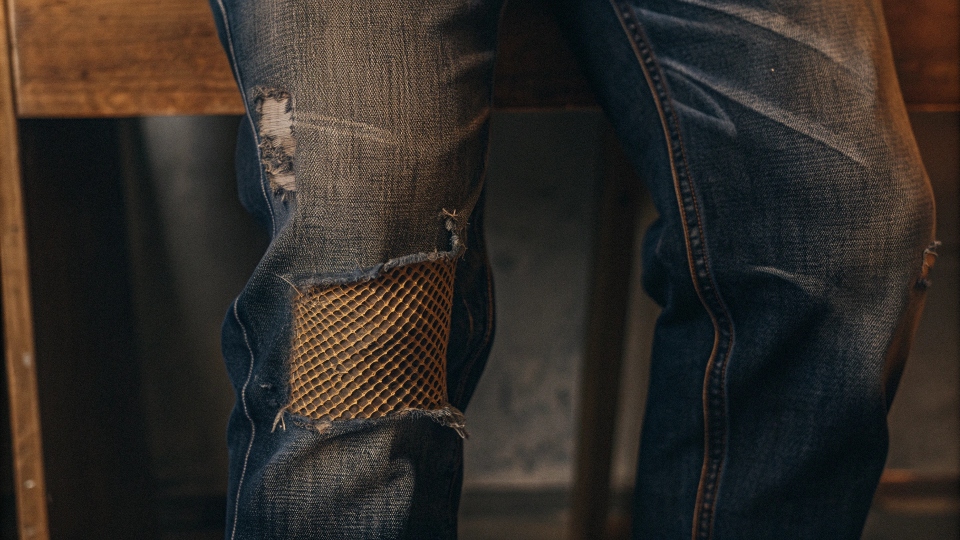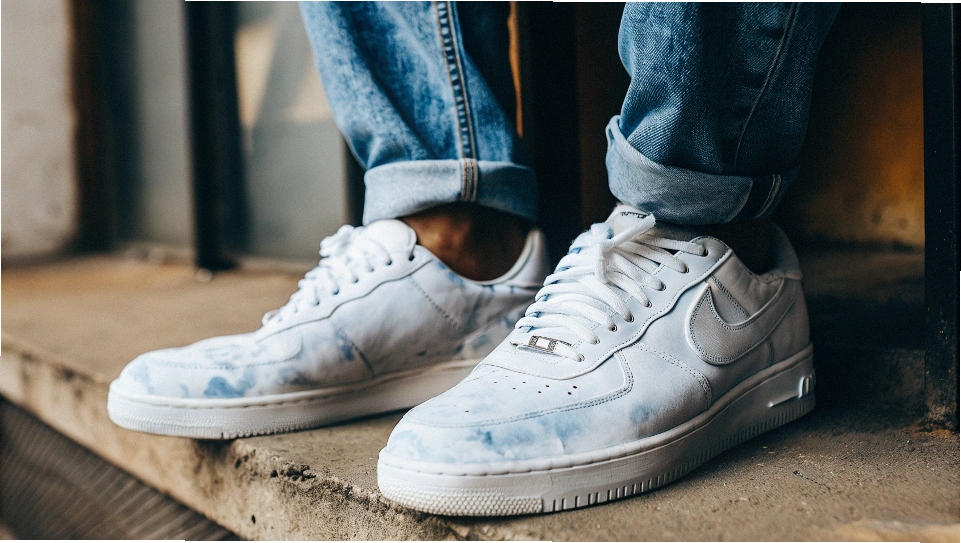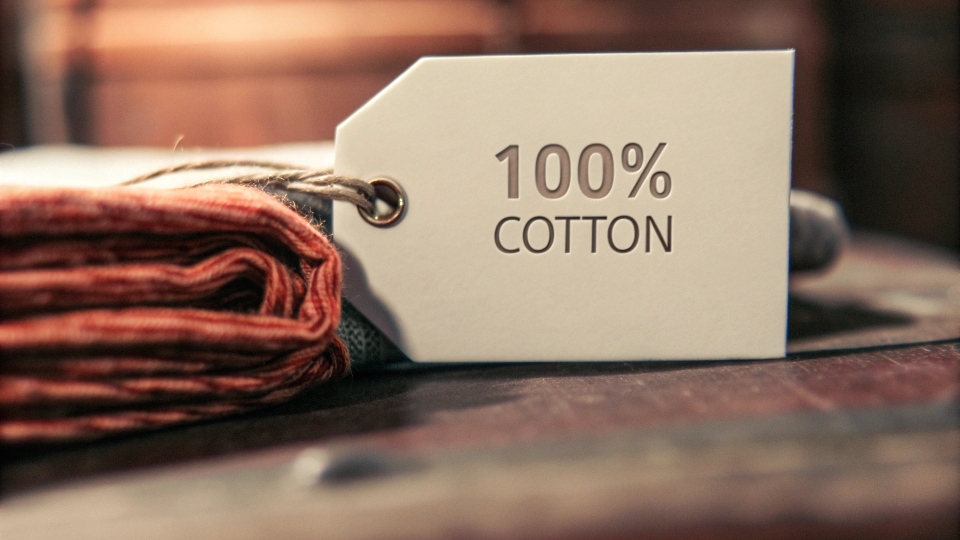You are shopping for jeans and see the term "raw denim1." It sounds premium, but the jeans feel stiff and uncomfortable. You wonder what the big deal is and why anyone would choose them.
Raw denim is denim fabric in its purest, unwashed state, straight from the loom. Regular jeans are made from the same fabric but have been washed, treated, and softened at the factory to be comfortable from the very first wear.
In my factory, we work with both types of denim every day. Think of it like this: raw denim is a blank canvas. It's stiff, dark, and a bit unpredictable.
The person who buys it is the artist, and they use their own body and daily life to create a unique piece of wearable art. Regular jeans are the finished paintings. We, the manufacturer, have already added the fades and softened them up. They are ready to hang on the wall, or in this case, wear right out of the store.
Are Raw Denim Jeans Better?
You want to buy the "best" jeans possible for your money. You hear denim fans talk about raw denim as the ultimate choice, but you wonder if they are truly superior.
Raw denim isn't better for everyone. It is better for people who want a personalized fit2 and unique fade3. For immediate comfort and easy care, regular pre-washed jeans are a much better choice.
The word "better" completely depends on what you want from your jeans. In my 20 years of making denim, I've seen that customers fall into two main groups. One group values a personal journey and craftsmanship.
The other group values convenience and comfort. Neither is wrong. Raw denim is technically superior in its potential for personalization, and it is often made with higher-quality, heavier fabric.
But this comes at the cost of comfort and ease. Regular jeans, especially from a good brand, offer fantastic quality and the huge advantage of being soft and perfectly fitted from day one.
Comparing Denim on What Matters
| Feature | Raw Denim | Regular Jeans |
|---|---|---|
| Initial Comfort | Low. Very stiff and rigid. | High. Softened at the factory. |
| Personalization | High. Fades to your body and lifestyle. | Low. Fades are designed in the factory. |
| Ease of Care | Low. Requires special washing and care. | High. Can be machine washed easily. |
| Best For | Denim enthusiasts and hobbyists. | The average consumer seeking comfort. |
What Is So Special About Raw Denim?
At first glance, raw denim jeans just look like a very dark, stiff pair of pants. So why do they have such a dedicated, passionate group of fans?
The special thing about raw denim is its ability to transform. The jeans start as a blank, dark blue canvas and gradually fade to reflect how you live, creating a pattern that is 100% unique to you.
In my factory, we spend a huge amount of time and energy trying to replicate this natural aging process. We use lasers, hand-sanding, and special washing techniques to create fades that look authentic.
The special part about raw denim is that the owner does this work naturally. Over months of wear without washing, the stiff fabric4 creases in specific places. The indigo dye then slowly rubs off on these high-friction areas. This creates beautiful, personal patterns that have their own names among enthusiasts.
- "Whiskers" or "Cat Whiskers": These are the faded lines that form across your lap from sitting and bending.
- "Honeycombs": These are the intricate, honeycomb-like patterns that develop behind your knees.
- "Stacks": These are the corrugated fades that form at the ankle where the jean bunches up over your shoes.
This process is a kind of ritual. It connects the wearer to their clothing in a way that is almost impossible with other garments. It’s a project, and the final result is a pair of jeans that tells a personal story.
What Are the Disadvantages of Raw Denim?
You are thinking about buying your first pair of raw denim jeans. But you have heard some negative things about the experience and want to know the real downsides before you spend your money.
The main disadvantages of raw denim are the uncomfortable and long break-in period, the tendency for the dark indigo dye5 to bleed onto other fabrics, and the tricky washing process6 needed to control shrinkage.
While the end result of raw denim can be amazing, the journey to get there is not for everyone. As a manufacturer, I can tell you that we wash 99% of our jeans for a reason: to avoid these exact problems for the customer. Before you commit, you absolutely need to understand the challenges.
First, there is the discomfort. A new pair of heavy raw denim jeans can feel like you are wearing cardboard. It can take weeks or even months of consistent wear before the fabric softens and starts to feel comfortable.
Second, the indigo dye is not stable. It will rub off on everything. This is called "crocking." It will stain your hands, your white shoes, your light-colored sofas, and your car seats. You have to be very careful, especially for the first few months.
Finally, there is washing. Raw denim can shrink a lot when it first hits water, sometimes by 5% to 10%. This means you have to either buy a size up and do a pre-soak, or be extremely careful when you eventually wash them. It's a complicated process that turns many people away.
Is 100% Cotton Jeans Raw Denim?
You are reading the label on a pair of jeans and see "100% Cotton." You think this must be a sign of quality, and you wonder if it also means the jeans are raw denim.
No, 100% cotton7 does not mean the jeans are raw denim. "100% Cotton" describes the material the fabric is made from, while "raw" describes whether that fabric has been washed at the factory.
This is one of the most common points of confusion, and it is important to understand the difference. Almost all denim, whether it is raw or pre-washed, starts as 100% cotton fabric. They are two separate and independent qualities of a pair of jeans.
Think about it from my factory's perspective. We receive huge rolls of denim fabric. Some of it is 100% cotton, and some is a cotton-elastane blend for stretch. At this point, all of this fabric is in a raw state.
For most of the jeans we make, we take this fabric, sew it into jeans, and then put those jeans through a long series of washes and treatments. The final product is a soft, pre-washed pair of 100% cotton jeans. For raw denim jeans, we simply skip all of those final washing steps.
We take the raw fabric, sew it, and ship it. So, you can have a soft, faded pair of 100% cotton jeans, and you can also have a stiff, dark pair of raw denim jeans made from that exact same fabric.
Conclusion
Raw denim is a hobbyist's choice, offering a unique, personalized product for those willing to do the work. Regular jeans provide immediate comfort and convenience for the vast majority of people.
-
Explore the unique characteristics of raw denim and discover why it captivates enthusiasts. ↩
-
Learn how raw denim offers a tailored experience that evolves with your body over time. ↩
-
Understand the fascinating process behind the unique fades that make raw denim special. ↩
-
Understand the properties of raw denim that contribute to its initial stiffness. ↩
-
Discover the role of indigo dye in raw denim and its impact on the fabric's appearance. ↩
-
Get tips on the best washing practices for raw denim to maintain its fit and quality. ↩
-
Clarify the common misconception about cotton content and raw denim characteristics. ↩

